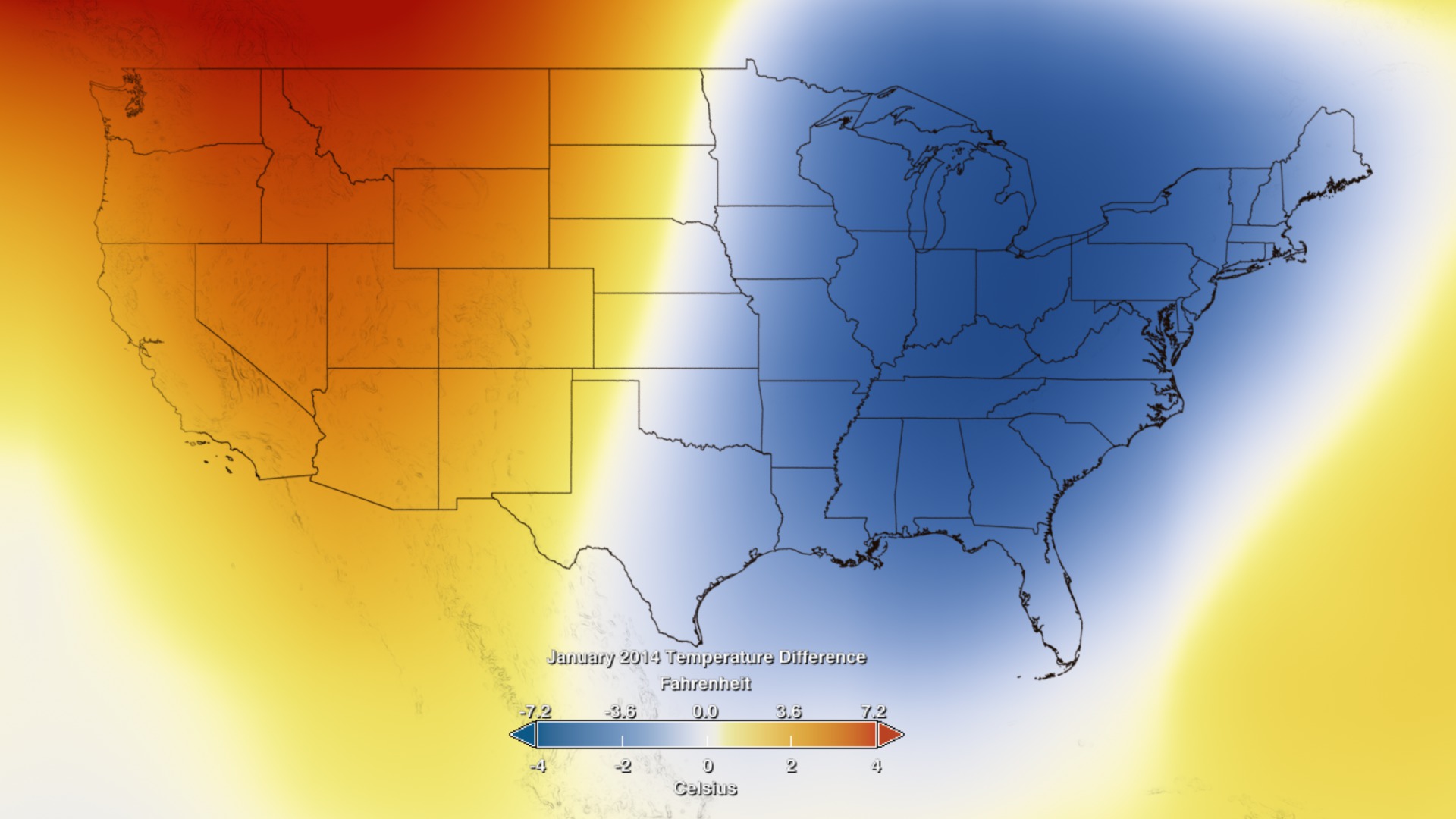Hot Or Not
This harsh winter may have come as a surprise to people accustomed to hearing that the world is warming. Temperatures were below average across most of the contiguous United States in February, and on opposite ends of the spectrum in January, with the western and eastern U.S. experiencing extreme highs and lows, respectively. Meanwhile, the world as a whole endured the fourth warmest January and 21st warmest February on record, according to NASA and NOAA temperature analyses. Scientists say the temperature patterns observed this winter are a great example of the difference between weather and climate. As climate change causes the planet to warm, localized variations in temperature due to weather may still occur. Watch the video to see how temperatures in the U.S. compared to the rest of the world in January 2014.

Winter was one of the warmest or coldest on record depending on where you live.
This visualization of NASA temperature data shows how January 2014 differed from the average temperature for the same month during 1951-1980.

In January 2014, U.S. temperatures were below average in the east and above average in the west.

High temperatures in the Arctic drove up the global average in January 2014, making it the fourth warmest January on record.

In February 2014, temperatures were below average across almost all of the contiguous U.S.

Much of the Northern Hemisphere was warmer than average in February 2014.
Credits
Please give credit for this item to:
NASA's Scientific Visualization Studio
-
Animator
- Lori Perkins (NASA/GSFC)
-
Producer
-
Scientists
- Gavin A. Schmidt (NASA/GSFC GISS)
- Robert B Schmunk (SIGMA Space Partners, LLC.)
- Reto A. Ruedy (SIGMA Space Partners, LLC.)
- Kwok-Wai Ken Lo (SIGMA Space Partners, LLC.)
- Makiko Sato (Columbia University, Center for Climate Systems Research)
-
Project support
- Robert B Schmunk (SIGMA Space Partners, LLC.)
-
Writer
- Patrick Lynch (Wyle Information Systems)
Release date
This page was originally published on Tuesday, May 20, 2014.
This page was last updated on Wednesday, May 3, 2023 at 1:50 PM EDT.
